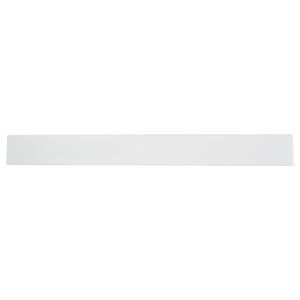If you’re planning a renovation project or simply refreshing your home’s look, you’ve likely come across various flooring options and accessories. One essential component that often gets overlooked is the floor and decor threshold. As someone who’s navigated the world of home decor, I can tell you that a good threshold makes a significant difference in both aesthetics and functionality. In this guide, we’re going to dive deep into everything you need to know about thresholds, their types, installation methods, and much more!
What is a Floor and Decor Threshold?
A floor and decor threshold is a strip that is placed between two different types of flooring surfaces or at the entrance to a room. They serve multiple purposes: bridging the gap between various flooring materials, providing a finished look, and protecting edges from wear and tear.
Types of Floor and Decor Thresholds
Understanding the different types of thresholds can help you choose the right one for your project.
1. T-Molding
T-molding is used when transitioning between two floors of the same height. It resembles the letter “T” and helps to create a smooth transition.

2. Reducer Molding
Reducer molding is ideal when you transition from a higher floor surface to a lower one. This type of threshold gently slopes down, preventing tripping hazards.
3. End Cap
End caps are used to finish off the edge of a flooring surface, providing a clean look when transitioning to a different material or to a baseboard.

4. Carpet Transition Strip
This type is specifically designed for transitioning from carpet to a hard surface like tile or vinyl. It secures the carpet while creating a safe transition.
Benefits of Installing a Floor and Decor Threshold
Now that we understand what a threshold is, let’s explore why they are a critical part of any flooring project.

- Aesthetic Appeal: Thresholds add a polished look to your flooring.
- Durability: Protect the edges of your flooring from damage and wear.
- Safety: Reduce the risk of tripping by providing a smooth transition between surfaces.
- Sound Dampening: Some thresholds can help reduce noise from one room to another.
Choosing the Right Floor and Decor Threshold
When selecting a threshold, consider the following factors:

1. Material
Common materials for thresholds include wood, metal, and vinyl. Each has its pros and cons.
Comparison of Threshold Materials
| Material | Durability | Cost | Maintenance |
|---|---|---|---|
| Wood | Moderate | $ | Requires refinishing |
| Metal | High | $$ | Low maintenance |
| Vinyl | Moderate | $ | Occasional cleaning |

2. Height Difference
Measure the height difference between the flooring types to choose the correct threshold type.
3. Color and Style
Select a threshold that complements your flooring and overall decor style.

Installation Guide for Floor and Decor Thresholds
Installing a threshold may seem daunting, but it can be a straightforward DIY project with the right tools and guidance. Here’s how to do it:
Tools You’ll Need
- Measuring Tape
- Utility Knife
- Chisel
- Adhesive or Fasteners
- Level

Step-by-Step Installation Process
- Measure the Opening: Measure the width of the opening where the threshold will go.
- Cut the Threshold: Using your utility knife, cut the threshold to the appropriate length.
- Test Fit: Place the threshold in position to ensure a snug fit.
- Secure the Threshold: Apply adhesive or use fasteners to secure the threshold in place.
- Check for Level: Use a level to ensure the threshold is even and properly placed.
Maintenance Tips for Your Floor and Decor Threshold
Once installed, maintaining your thresholds is crucial for longevity and appearance. Here are some tips:
- Regular Cleaning: Dust and clean your thresholds regularly to prevent buildup.
- Inspect for Damage: Periodically check for any signs of wear or damage and address them promptly.
- Refinishing or Repainting: Wood thresholds may need refinishing or repainting over time to maintain their look.
Pros and Cons of Floor and Decor Thresholds
Pros
- Enhances visual appeal
- Protects flooring edges
- Prevents tripping hazards
- Defines spaces within the home
Cons
- May require specific installation skills
- Cost can vary based on material
- Potential for damage over time if not maintained
Frequently Asked Questions (FAQs)
1. How much does a floor and decor threshold cost?
The cost of a floor and decor threshold can range from $10 to $50 or more, depending on material, size, and brand.
2. Can I install a threshold myself?
Yes! With basic tools and careful measurements, most homeowners can install thresholds themselves.
3. What if my flooring heights are uneven?
If your flooring heights are significantly different, consider using a reducer molding to create a smooth transition.
4. How do I clean my threshold?
Use a damp cloth and mild detergent for cleaning. Be cautious with wood thresholds, as excessive moisture can cause damage.
My Personal Experience with Floor and Decor Thresholds
During my home renovation, I underestimated the impact of thresholds. Initially, I opted for the cheapest option, which proved to be a mistake. After a few months, the threshold started to warp and lost its color. After some research and learning from my experience, I replaced it with a durable metal threshold that not only improved the look of my transition area but has also held up beautifully over time. Investing in quality truly pays off!
Conclusion
A floor and decor threshold is more than just a functional piece; it is an important aspect of your home’s aesthetic and safety. By choosing the right type, material, and maintaining it properly, you can enhance both the beauty and longevity of your flooring. Whether you’re undertaking a renovation or just a small update, don’t overlook the power of the perfect threshold!